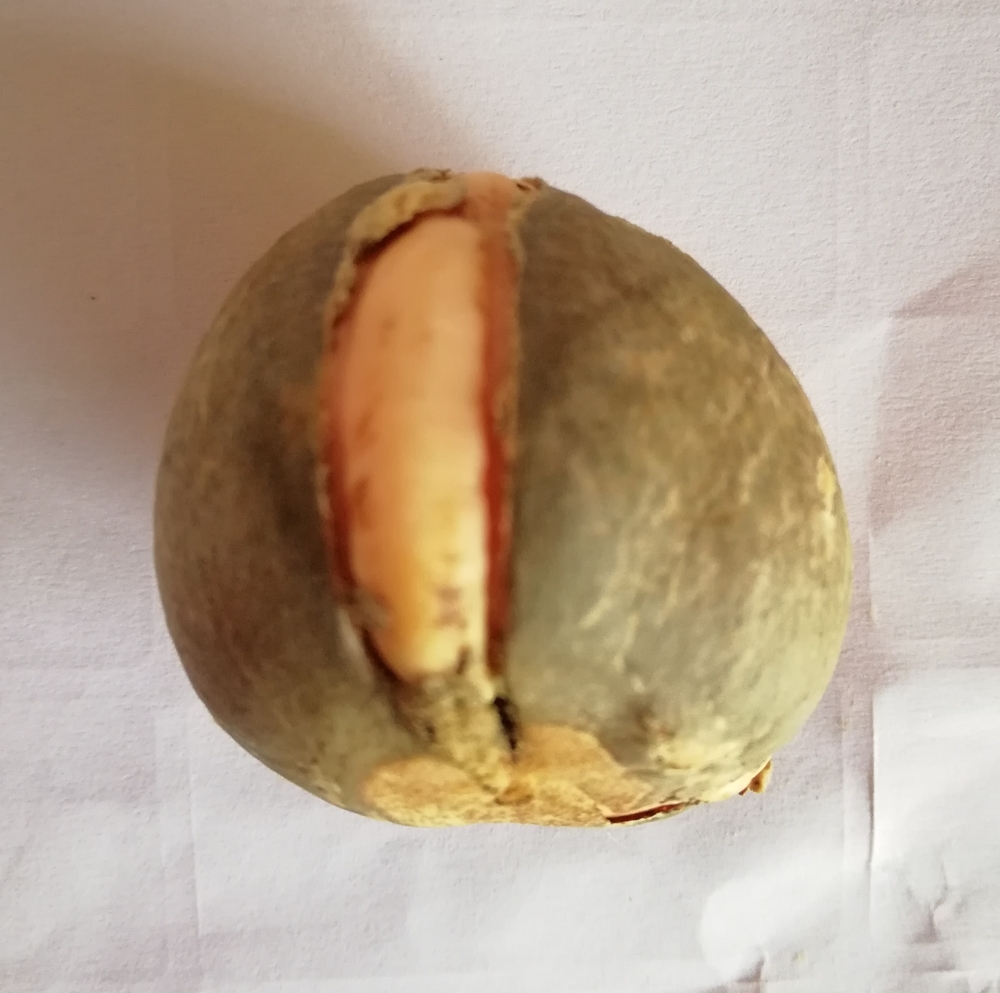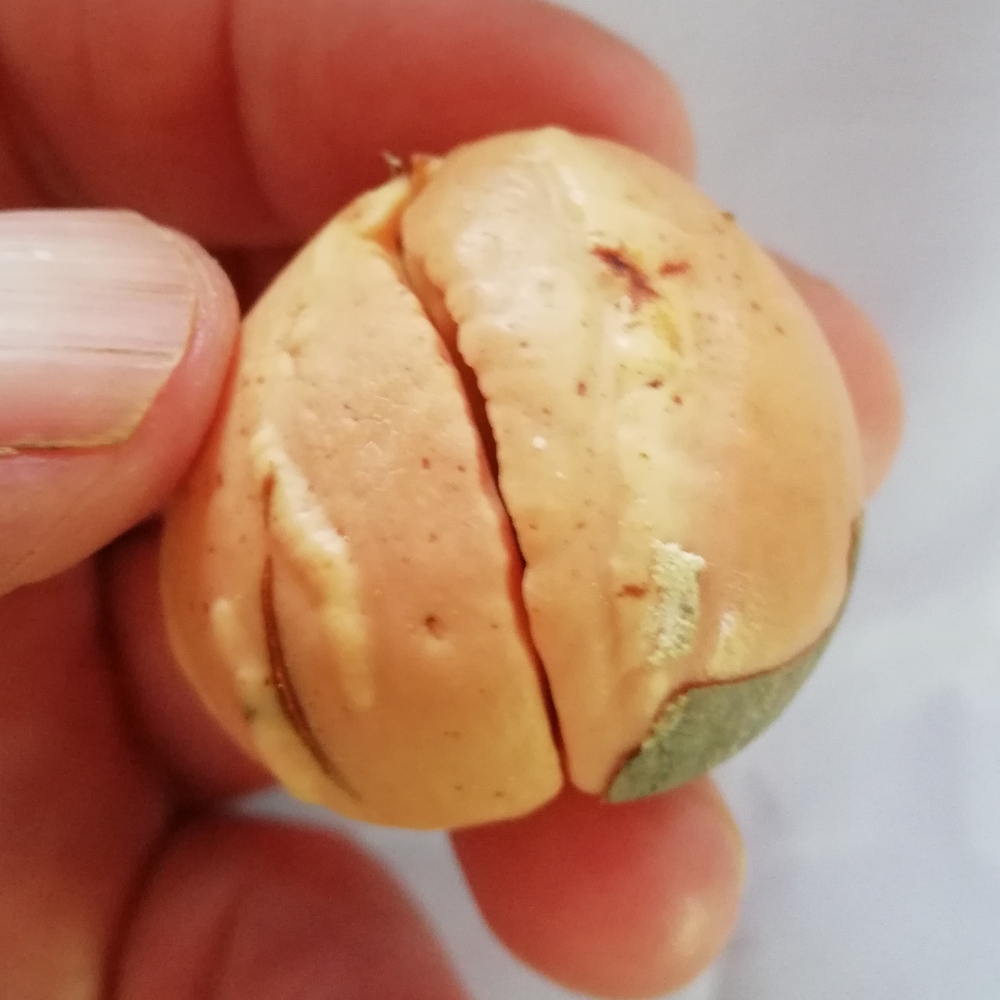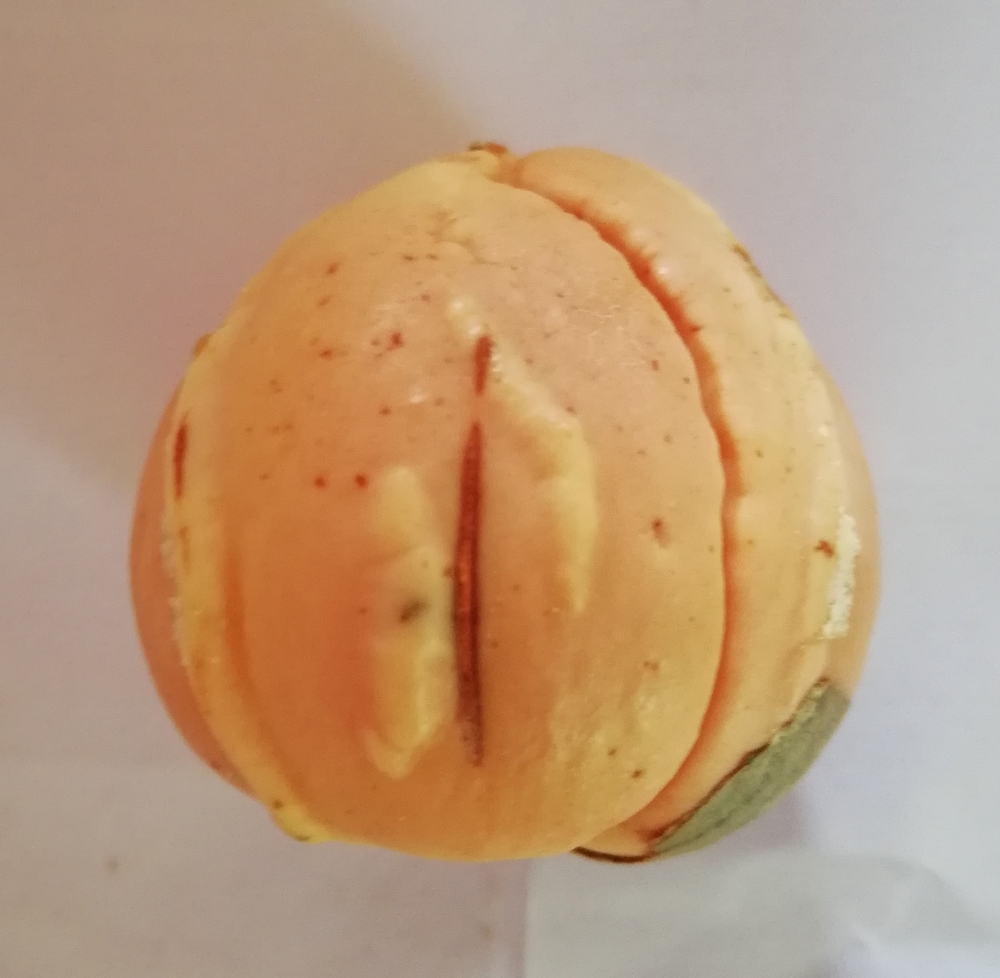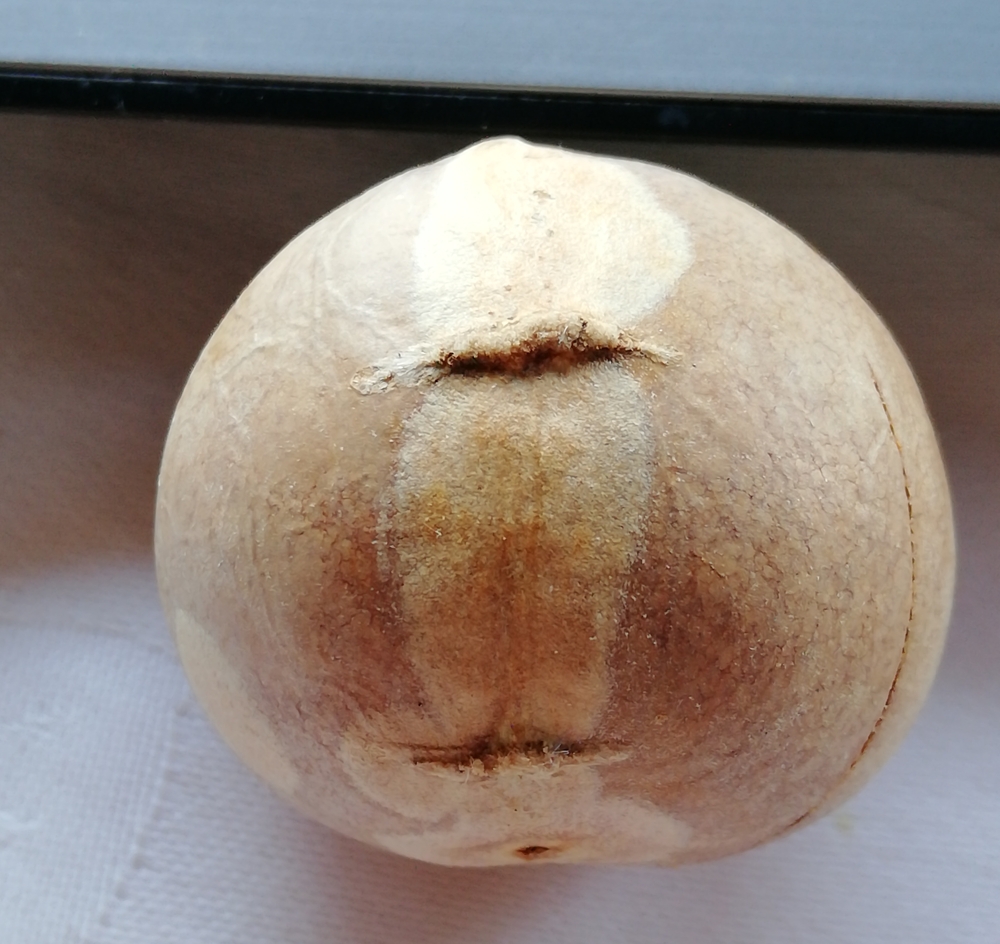Sclerified avocado seed cotyledon surface encrustations




These sclerified areas on these avocado seed are unusual. Seeds of the genus Persea don’t usually have sclereids associated with the seed. Two other genera in the Lauraceae family (Endiandra and Beilschmeidia) do have an inner sclerified layer, but it is continuous, not scattered (Little et al, 2009).
These hard longitudinal encrustations on the surface of the seed cotyledons are possibly lignified ‘stone cells’, or sclereids. Gritty ‘stone cells’ appear in (for instance) pear flesh, and are due to lignified cells (see Xue, C. et al, 2019)
Generally, the outer epidermal layer of cotyledons have thickened cell walls. Just why localised areas of this seed should over-express lignification (if that is indeed what is happening here) is a mystery to me.
Another seedling had several small horizontal lignified ridges, within a vertical swathe of light-colored seed coat.
Genes involved in lignification
The final step in the enzyme driven cascade of steps in the biosynthesis of lignin is the polymerization of monolignols into lignin, catalysed by either peroxidase (POD) or laccase (LAC) enzymes. A number of POD and LAC genes have been identified in plants. When some have been artificially suppressed, the cell walls are not as thick, and lower quantities of lignin are deposited.
Conversely, perhaps over-expression of POD or LAC gene/genes in some seed-coat epidermal cells causes this hard, stone-like sclerification of the tissue. These genes may or may not also be responsible for the localised tissue enlargements – either by increased cell volume or simply by increased cell number.
Gene modulation
MicroRNAs (miRs) are small noncoding RNAs that help modulate gene expression. The MicroRNA known as MiR397 has been found to target LAC, and overexpression of MiR397 increases grain size in rice by (in effect) suppressing LAC. Perhaps local underexpression of MiR397 results in hyper-lignification.
However, lignin biosynthesis is affected by many plant hormones.
According to Zhang et al., 2015, auxin reduces vessel lignification of the stoney peach endocarp. Once again, it is plausible that local overexpression of auxin levels might have increased lignification in this avocado seed. Overexpression of cytokin levels may have a similar effect.
The number of cell layers forming the stony endocarp of plum is very much larger than the cell layers in the endocarp of the plum variety ‘Stoneless’ (see fig. 6 in Callahan et al 2015). If the principle that stone tissues are much thicker than ‘non-stone tissues’ applies to avocado, then this principle, in conjunction with lignification, may fully explain this mutant seed.
Callahan et al (2015) found that endocarp started to form around 10 days after pollination, and there was more stone tissue in the (substantially stoneless) ‘stoneless’ plum cultivar when post-pollination temperatures happened to be warm. Perhaps warm temperatures also influence sclerified tissue expression in some avocado genotypes.
The seed coat of the seed with vertical sclerifications of the cotyledon was incomplete and ‘torn’ at the site of the abnormality. Whether genetic of physical is moot. A gene that affects seed coat morphology is APETALA2. Defects in AP2 activation affects seed coat development in Arabidopsis. ap2 mutant Arabidopsis seeds are more irregular-shaped, and lack the distinctive outer seed coat epidermal cellular structure of normal wild type seeds (Jofuku et al, 2005). As APETALA2 is evolutionarily conserved, it is likely to play a similar role in avocado, but how (and if) mutants might influence avocado seed coat is an open question.
References
Callahan, A., Dardick, C., Tosetti, R., Lalli, D., & Scorza, R. (2015). 21st Century Approach to Improving Burbank’s ‘Stoneless’ Plum, HortScience horts, 50(2), 195-200. Retrieved Jan 5, 2021, from https://journals.ashs.org/hortsci/view/journals/hortsci/50/2/article-p195.xml
Jofuku K. D., Omidyar, P. K., Gee, Z. Okamuro. 2005. Control
of seed mass and seed yield by the floral homeotic gene APETALA2
Proceedings of the National Academy of Sciences Feb 2005, 102
(8) 3117-3122;
DOI: 10.1073/pnas.0409893102
Little, S.A., Stockey, R.A. & Penner, B. 2009. Anatomy
and
development of fruits of Lauraceae from the Middle Eocene
Princeton chert. American Journal of Botany 96(3), 637–651.
DOI 10.3732/ajb.0800318
Xue, C., Yao, J.‐L., Qin, M.‐F., Zhang, M.‐Y., Allan, A.C., Wang, D.‐F. and Wu, J. (2019), PbrmiR397a regulates lignification during stone cell development in pear fruit. Plant Biotechnol J, 17: 103-117. https://doi.org/10.1111/pbi.12950
Zhang, W., Li, Y., Shi, M., Hu, H., Hua, B., Yang, A. and Liu, Y. (2015) Immunohistochemical localization of endogenous IAA in peach (Prunus persica L.) fruit during development. Korean J. Hortic. Sci. Technol. 33, 317–325.